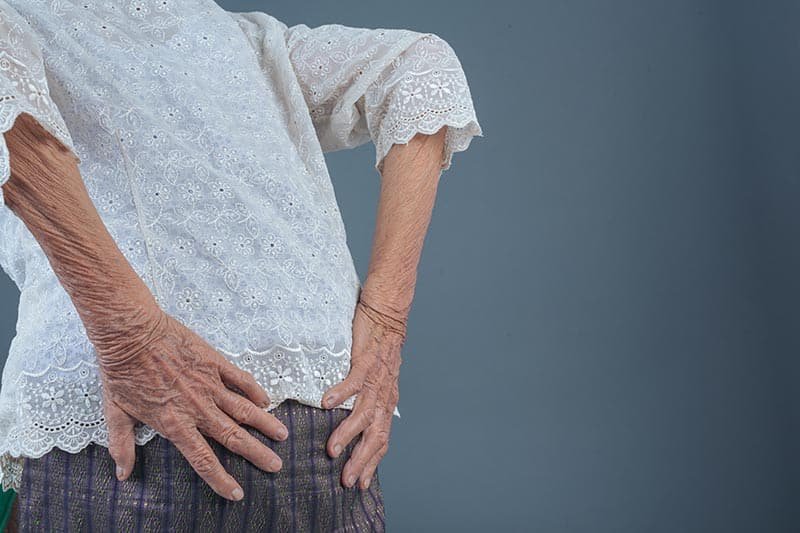Degenerate Disc Disease: Causes and Treatment
Degenerate disc disease is a common spinal condition that affects millions worldwide. This guide explains its causes, symptoms, and treatment options. It helps us understand how spinal discs work and how they can degenerate over time.
This happens due to age, injury, and lifestyle choices. Understanding this can help us tackle the disease better.
Managing degenerate disc disease requires a mix of treatments. This article looks at the important role of physiotherapy and PMS therapy. We’ll also cover how to recover and what the future holds for those with the disease.

Key Takeaways
- Degenerate disc disease is a common spinal condition that affects the intervertebral discs.
- Factors such as age, injury, and lifestyle choices can contribute to disc degeneration over time.
- Addressing degenerate disc disease involves a combination of conservative and surgical treatment options.
- Physiotherapy and PMS therapy can be effective in managing the symptoms and improving overall outcomes.
- Recovery time and outlook depend on the severity of the condition and the chosen treatment approach.

What is Degenerate Disc Disease?
Degenerate disc disease, also known as age-related disc degeneration, affects the spinal discs. These discs are the cushions between the vertebrae in the spine. Over time, these discs can break down, causing symptoms and complications.
Understanding the Structure of Spinal Discs
Spinal discs have two main parts: the outer layer and the inner core. The outer layer is called the annulus fibrosus. The inner core is the nucleus pulposus. The annulus fibrosus gives strength and flexibility. The nucleus pulposus acts as a shock absorber, helping the spine move and bend easily.
How Degeneration Occurs Over Time
As we age, spinal discs can start to degenerate. This can happen due to wear and tear, injury, or medical conditions. Degeneration makes the discs less flexible, reducing their cushioning and support for the spine.
Over time, the discs may become thinner and more brittle. They can be more prone to injury or herniation. The process of disc degeneration can be slow, taking years or decades to become noticeable. But once it progresses, it can cause pain, stiffness, and reduced mobility.
| Disc Structure | Function |
|---|---|
| Annulus Fibrosus | Provides strength and flexibility to the disc |
| Nucleus Pulposus | Acts as a shock absorber, allowing the spine to move and bend with ease |

Common Symptoms of Degenerate Disc Disease
Degenerate disc disease can cause many symptoms that affect daily life. It’s important to know these signs to get timely treatment. This helps manage the condition better.
Back pain is a common symptom of degenerate disc disease. The pain’s intensity and where it hurts depend on the disc’s condition. People often feel a dull ache that gets worse when they move or sit or stand for a long time.
Neck pain is another symptom, especially if the problem is in the neck. This can cause pain, numbness, and tingling in the arms and hands.
- Radiating pain in the legs or arms
- Numbness, tingling, or weakness in the extremities
- Difficulty maintaining proper posture or standing for extended periods
- Decreased range of motion and flexibility
The symptoms of degenerate disc disease vary based on where and how severe the disc is damaged. Recognizing these symptoms early and managing them well is key. It helps stop the condition from getting worse and keeps quality of life good.
| Symptom | Description |
|---|---|
| Back Pain | Dull, aching pain that worsens with movement or prolonged sitting/standing |
| Neck Pain | Radiating pain, numbness, and tingling in the arms and hands |
| Decreased Mobility | Difficulty maintaining proper posture and reduced range of motion |
Knowing and dealing with these symptoms of degenerate disc disease helps people manage their condition. This improves their quality of life.
Potential Causes of Degenerate Disc Disease
Degenerate disc disease is a complex condition with various possible causes. Age and injury or trauma are the main factors that lead to it.
Age-Related Disc Degeneration
As we get older, our spinal discs wear down naturally. This can make the outer layer weak and the inner layer lose moisture and elasticity. This leads to discs becoming less flexible and more likely to herniate.
Injury and Trauma
Injuries, like from a car accident or a fall, can harm the spinal discs. Also, repetitive strain from heavy lifting or poor posture can wear them down over time. These injuries can make the degeneration process worse and lead to degenerate disc disease.
It’s important to remember that age, injury, and trauma are just some of the possible causes of degenerate disc disease. Genetics, lifestyle, and other medical conditions can also affect it.

Degenerate Disc Disease: Identifying the Problem
Diagnosing degenerate disc disease is key to finding the right treatment. Doctors use tests and imaging to see how bad the disc degeneration is. This helps them make a treatment plan just for you.
Diagnostic Tests and Imaging
Your doctor starts with a physical check-up. They look at your symptoms, medical history, and check your spine and muscles. This helps them figure out where and how bad the disc degeneration is.
Imaging tests are vital for confirming the diagnosis and seeing how much damage there is. X-rays show the spine’s structure and can spot signs like disc height loss or bone spurs. CT scans give detailed views of the spine, showing where the disc degeneration is. MRI scans give a full view, showing both discs and soft tissues. This helps doctors see exactly where and how bad the problem is.
Together, these diagnostic tests and imaging give a clear view of your condition. This lets your healthcare team create the best treatment plan for your degenerate disc disease.
Treatment Options for Degenerate Disc Disease
If you have degenerate disc disease, there are many ways to find relief and manage it. These options include both conservative and surgical treatments. Each type has its own benefits and things to consider.
Conservative Approaches
First, doctors often suggest conservative treatments. These methods aim to ease symptoms and slow the disease’s progress without surgery. Here are some examples:
- Medication: You might take over-the-counter or prescription pain relievers, anti-inflammatory drugs, and muscle relaxants to help with discomfort and swelling.
- Physical Therapy: This includes exercises, stretching, and strengthening to improve flexibility, core stability, and spinal health.
- Lifestyle Modifications: Making changes like managing your weight, adjusting your workspace, and keeping a good posture can also help reduce spine and disc stress.

How Physiotherapy Helps in Degenerate Disc Disease
If you’re dealing with degenerate disc disease, physiotherapy can be a big help. It’s a type of physical therapy that targets the main causes of your condition. This approach helps manage symptoms and boost your overall health.
Physiotherapy focuses on the muscles and joints near the affected spinal area. By doing specific exercises and stretches, physiotherapists aim to strengthen these areas. This helps reduce pressure on the degenerated discs, which can lessen pain and improve how well you function.
- Strengthening core and back muscles to support the spine
- Improving flexibility and range of motion through targeted stretches
- Implementing low-impact exercises to promote circulation and reduce inflammation
- Providing manual therapy techniques, such as massage and joint mobilization, to relieve pain and stiffness
- Educating patients on proper posture and body mechanics to prevent further disc degeneration
Physiotherapists may also use heat, cold, or electrical stimulation to help with pain and healing. This holistic approach is key in helping people with degenerate disc disease improve their quality of life and stay independent.
The main aim of physiotherapy is to empower patients. It gives them the tools and knowledge to take part in their recovery and manage their condition over time. With the help of a skilled physiotherapist, those with degenerate disc disease can find relief, move better, and live a more fulfilling life without pain.

Pms Therapy for Degenerate Disc Disease
For those facing the tough effects of degenerate disc disease, pms therapy (Passive Motion Stimulation) is a non-invasive hope. It’s a way to help without using drugs. It uses the body’s own healing powers to lessen pain, increase movement, and help discs heal.
Pms therapy works by using gentle, controlled movements on the spine. This helps make important nutrients and boosts blood flow in the disc. The goal is to cut down on swelling, ease nerve pressure, and make a healing environment for the disc.
- Minimizes pain and discomfort associated with degenerate disc disease
- Improves flexibility and range of motion in the spine
- Supports the body’s natural healing processes within the affected disc
- Provides a non-invasive, drug-free treatment option
Studies have shown that pms therapy can really help with degenerate disc disease symptoms. It uses the body’s healing powers in a new way. This approach is a great choice for those looking to avoid surgery or other invasive treatments. It lets people take charge of their health and recovery.
Recovery Time and Outlook
Getting better from degenerate disc disease can take time and depends on many things. The recovery time changes a lot. This includes how bad the condition is, the treatment you get, and your health and lifestyle.
If you choose non-surgical treatments like physical therapy and managing pain, recovery can take weeks to months. But, if your condition is severe or these treatments don’t work, surgery might be needed. Surgery can make recovery take months, depending on the surgery and how well you heal.
Remember, degenerate disc disease is a long-term condition. Even with treatment, it can come back or get worse. You’ll need to keep up with treatments, take care of yourself, and see your doctors regularly.
For those who catch and treat the disease early, the outlook is good. With the right treatment and taking care of yourself, you can live an active life and feel good. But, it’s important to be realistic and work with your healthcare team to find the best way to recovery and manage your condition over time.
Conclusion
This article has covered degenerate disc disease from many angles. We looked at its causes, symptoms, how it’s diagnosed, and treatment options. By learning about this condition, people can take steps to manage their symptoms and recover.
It’s key to get medical advice and try both non-surgical and surgical treatments for degenerate disc disease. We’ve talked about how age, injuries, and trauma can cause it. This helps readers understand this complex issue better.
Physiotherapy and PMS therapy are important in treating degenerate disc disease. They offer hope and effective ways to deal with the condition. This conclusion aims to help readers take charge of their health and make smart choices about their treatment.





